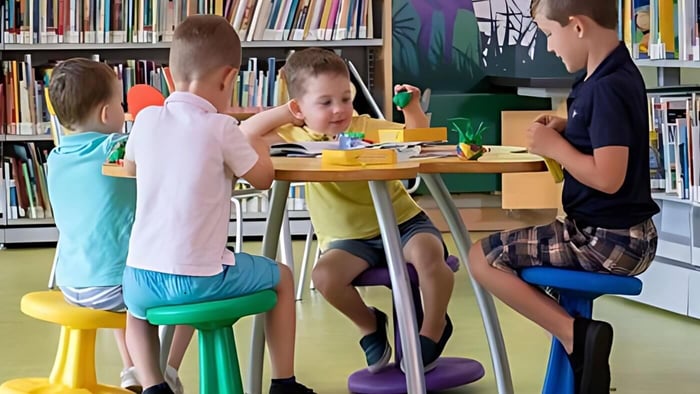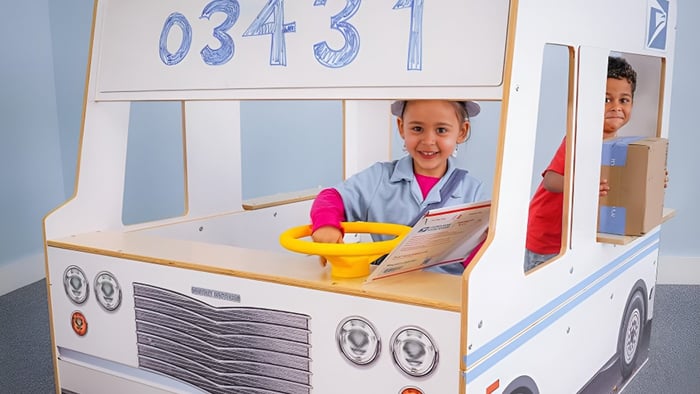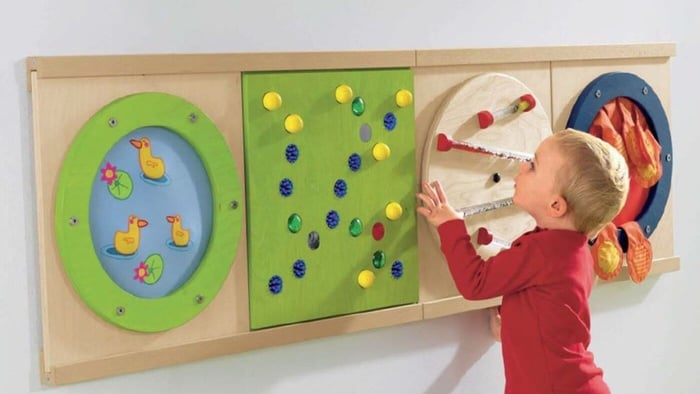
Elementary Classroom Layout Ideas for Maximizing Small Spaces
Table of Contents
- Cramped elementary classrooms don't have to limit learning potential. Smart teachers are discovering that strategic furniture swaps and multi-functional zones can actually double classroom functionality—but the key lies in knowing which traditional setups to abandon first.
- Key Takeaways
- Why Tables Beat Individual Desks in Small Classrooms
- Create Multi-Purpose Learning Zones That Work
- Smart Vertical Storage Solutions
- Multi-Functional Furniture That Maximizes Space
- Flexible Seating Options for Better Learning
- Transform Your Small Classroom Into an Efficient Learning Hub
- FAQs
Cramped elementary classrooms don't have to limit learning potential. Smart teachers are discovering that strategic furniture swaps and multi-functional zones can actually double classroom functionality—but the key lies in knowing which traditional setups to abandon first.
Key Takeaways
- Tables beat individual desks in small elementary classrooms by increasing floor space and encouraging natural collaboration among students
- Multi-purpose learning zones transform small classrooms into efficient spaces that serve multiple functions simultaneously
- Vertical storage solutions and multi-functional furniture maximize every square inch without sacrificing accessibility
- Flexible seating options give students choice and control while improving focus and comfort throughout the day
- Strategic zone design and smart furniture placement can double the functionality of even the smallest classroom spaces
Small elementary classrooms don't have to feel cramped or limiting. With thoughtful planning and creative solutions, teachers can transform tight spaces into dynamic learning environments that actually improve student engagement and academic success.
Why Tables Beat Individual Desks in Small Classrooms
The traditional rows of individual desks consume valuable floor space that small classrooms simply can't spare. Tables offer a smarter alternative that immediately opens up the room for movement and activities. Research shows that seating students at tables instead of desks allows for more floor space and makes collaboration a natural part of lessons.
Beyond space savings, tables encourage students to work together organically. When children sit around a shared surface, they naturally begin discussing their work, sharing materials, and helping each other problem-solve. This collaborative environment eliminates the isolation that individual desks can create, especially important in smaller spaces where students might otherwise feel confined.
The practical benefits extend to classroom management as well. Teachers can easily access all students at a table from multiple angles, making it simpler to provide individual support or monitor group work. Little People's Cove specializes in creating efficient learning environments that maximize both space utilization and student engagement through strategic furniture placement.
Create Multi-Purpose Learning Zones That Work
Successful small elementary classroom design relies on creating distinct areas that serve multiple functions throughout the day. Rather than dedicating large spaces to single purposes, smart zone design allows the same area to transform based on the current learning activity.
1. Design a Flexible Reading Corner
A classroom corner can become a literacy hub by strategically placing floor cushions, bean bags, clipboards or lap mats and writing tools in this zone. The key is selecting lightweight, movable pieces that students can rearrange based on whether they're reading independently, working on writing assignments, or participating in small group discussions.
Consider using a colorful rug to define the space visually without permanent barriers. Wall-mounted book displays keep literature accessible while saving floor space. Add a small rolling cart with supplies that can move in and out of the area as needed, transforming the reading corner into a complete learning station.
2. Set Up Group Work Areas
Group work zones need flexibility above all else. Trapezoid or hexagonal tables work particularly well because they can be pushed together to accommodate larger groups or separated for smaller teams. Activity tables with built-in storage underneath keep collaborative materials organized and easily accessible.
Mobile storage units on wheels allow teachers to quickly reconfigure these areas. Rolling bookshelves can serve as temporary dividers between groups, providing both organization and noise reduction. The goal is creating spaces that adapt to different group sizes and project types without major furniture moving.
3. Establish Individual Focus Spaces
Even in collaborative environments, students need quiet spaces for independent work. These don't require large areas—a single desk facing a wall, a floor cushion with a lap desk, or even a standing-height surface can provide the focused environment some learners need.
Portable dividers or even tall plants can create psychological boundaries without permanent walls. The key is giving students permission to use these spaces when they need them, teaching self-awareness about their own learning needs and preferences.
Woodland Big Screen Play Panels

$1,071.13
These cozy Woodland Big Screen Play Panels can serve a variety of purposes in any classroom preschool or nursery. Great for creating a quiet space...… read more
Smart Vertical Storage Solutions
Vertical space often goes unused in elementary classrooms, yet it offers tremendous potential for organization and display. The key is making these elevated areas both functional and accessible to young learners.
1. Wall-Mounted Organization Systems
Wall-mounted shelves eliminate the floor space that traditional bookcases consume while keeping materials at student eye level. Install shelving at varying heights to accommodate different supplies—lower shelves for daily materials students access independently, higher shelves for teacher supplies and occasional-use items.
Magnetic strips on walls hold metal supplies like scissors and rulers. Cork strips or fabric panels create instant display areas for student work without taking up bulletin board space. The goal is creating organized storage that students can see and access without adult assistance.
2. Over-the-Door Storage Options for Supplies and Classroom Management
Doors represent untapped storage potential in small classrooms. Over-the-door organizers with clear pockets keep frequently used supplies visible and organized. Shoe organizers work particularly well for art supplies, math manipulatives, and individual student supplies.
Consider adding hooks at student height for backpacks, jackets, or project folders. This prevents the chair-back storage that creates clutter around desks while giving each student a designated space for personal items.
3. Cabinet Top and Under-Table Storage
The space above cabinets and underneath tables offers hidden storage opportunities. Rolling bins that slide under tables keep supplies organized but accessible. Stackable storage containers on cabinet tops hold seasonal materials or supplies used less frequently.
Under-table storage works particularly well for group supplies—one bin per table containing the materials that group uses regularly. This eliminates the need for students to leave their workspace to gather supplies, reducing disruptions and saving time during transitions.
Multi-Functional Furniture That Maximizes Space
The right furniture choices can dramatically increase classroom functionality without expanding the physical footprint. Multi-functional pieces serve double or triple duty, which is vital in space-constrained environments.
1. Stackable and Nesting Options
Stackable chairs and nesting tables provide the ultimate flexibility for small classrooms. When not in use, these pieces occupy minimal storage space, freeing up room for other activities. Studies indicate that stackable designs made with tough plastics resist scratches and stains, and their designs allow for easy storage and classroom space management.
Nesting tables offer particular value because teachers can pull out additional work surfaces when needed for projects or group work, then tuck them away when floor space becomes the priority. This adaptability allows the same classroom to handle vastly different activities throughout the day.
2. Mobile Storage Units
Rolling storage transforms static classroom layouts into adaptable spaces. Educational research confirms that rolling bookshelves and storage cabinets can be moved to dynamically optimize classroom layout, serving as room dividers one moment and supply stations the next.
Mobile units work particularly well for art supplies, STEM materials, or reading collections. Teachers can wheel the appropriate supplies directly to where students are working rather than having students leave their learning zones. This mobility keeps learning areas uncluttered while ensuring materials remain easily accessible.
Flexible Seating Options for Better Learning
Flexible seating gives students choice and control over their learning environment, leading to increased engagement and better focus. Educational studies show that comfortable students are better able to learn and work, making flexible seating a valuable tool. The key is providing options that suit different learning styles and physical needs.
1. Portable Bean Bags and Floor Cushions with Handles
Bean bags and floor cushions with carry handles give students comfortable seating options they can move independently. Commercial-grade versions resist spills and heavy use while providing the cozy atmosphere that encourages reading and focused work.
The portability factor is important—students can grab a cushion and create their own workspace anywhere in the room. This flexibility supports different learning activities throughout the day without requiring permanent seating arrangements that consume valuable floor space.
2. Wobble Stools and Balance Balls for Focus and Posture
Active seating options like wobble stools and balance balls allow movement that actually improves concentration for many students. Research demonstrates that wiggle seats and balance ball chairs are designed to offer sensory input and movement options for active students, supporting focus and physical comfort while being built to withstand daily classroom use.
These seating options work particularly well for students who struggle with traditional chairs. The gentle movement helps regulate their sensory system, leading to better attention and less disruptive behavior. Balance balls with legs prevent rolling away while maintaining the movement benefits students seek.
Active Learning Wobble Stool, 12"H

$66.01
Active Learning Wobble Stool, 12"H with it's rounded bottom creates a rocking motion which encourages active sitting. Increases learning retention, improves balance and memory. Perfect for...… read more
3. Movable Chairs and Lap Desks
Lightweight chairs that students can easily relocate give them autonomy over their workspace while maintaining proper support. Paired with lap desks, these combinations allow students to work comfortably on the floor, at low tables, or in alternative spaces around the room.
Lap desks prove particularly valuable for students who prefer floor seating or want to work in reading corners. The portable work surface ensures they can write and draw comfortably regardless of where they choose to sit, expanding the usable learning space throughout the classroom.
Transform Your Small Classroom Into an Efficient Learning Hub
Creating an efficient small elementary classroom requires combining all these elements into a cohesive plan that supports both teaching and learning. The most successful transformations focus on flexibility, accessibility, and maximizing every available inch.
Start by mapping out your needed zones—whole group instruction, small group work, independent practice, and storage. Then select furniture and storage solutions that serve multiple purposes within these zones. A reading corner can become a quiet work space, a group table can host art projects, and mobile storage can reconfigure to support different activities.
Remember that classroom design experts agree that in small elementary classrooms, multi-functional furniture and learning centers are the best way to maximize space. The goal isn't cramming more into the space, but making every element work harder and smarter. When students have clear zones for different activities, appropriate seating choices, and easily accessible materials, even the smallest elementary classroom becomes a productive learning environment.
The key to success lies in teaching students to use the space responsibly and independently. When children understand how different areas function and can make appropriate choices about where and how to work, the classroom transforms from a cramped space into an efficient, engaging learning hub that supports diverse learning styles and activities.
Ready to transform your small classroom into a productive learning environment? Visit Little People's Cove for expert guidance on creating efficient, engaging educational spaces.
FAQs
How can I maximize space to allow for movement and avoid overcrowding?
Maximize space in small elementary classrooms by choosing flexible, lightweight furniture that can be easily rearranged or stacked when not in use. Use defined learning zones and keep pathways clear so students can move without bottlenecks. Prioritize vertical storage and wall-mounted organizers to free up floor space and reduce clutter.
What desk setups foster both collaboration and individual learning?
Desk setups that balance collaboration and individual learning often use flexible arrangements. Small group pods of 3–4 desks support teamwork, discussion, and partner activities, while still allowing students to pivot into independent work without distraction. Mixed-use layouts—such as pairs, staggered rows, or semicircles—give students clear personal space but can quickly be joined for group tasks. Mobile or lightweight desks make it easy to shift between collaborative clusters and solo configurations throughout the day.
Does the classroom design support differentiated instruction for varied abilities and learning styles?
Yes—thoughtful classroom design can strongly support differentiated instruction by offering multiple ways for students to engage and learn. A variety of seating options (floor cushions, standing desks, traditional desks) lets students choose what fits their needs, while clearly defined zones—like small-group tables, independent work nooks, and hands-on learning stations—allow the teacher to tailor activities by skill level or modality. Visual supports, flexible lighting, and accessible storage also help diverse learners navigate tasks independently and comfortably.



